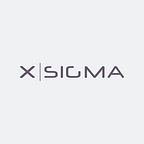Unpacking the Tech That Makes xSigma Tick
What makes xSigma different from other AMMs is that it’s been optimized for stablecoins, with the goal of reducing slippage and preventing LPs from incurring impermanent loss, caused when the value of pooled token pairs fluctuates. This allows for greater profitability, both when trading and LP’ing.
Why a Stablecoin AMM?
Stablecoins played a relatively minor role in the 2017 crypto bull run, but this time around, they’re at the heart of it. The number of stablecoin trading pairs, both on CEXs and DEXs, has multiplied exponentially, and traders are now as likely to swap tokens using DAI, USDC, or USDT as they are to use ETH. The number of ways in which stablecoins can be used to unlock the liquidity in staked assets, and to participate in yield farming, has also multiplied.
xSigma isn’t like other DEXs. Sure, it supports decentralized token swaps, just like the DEXs you already know and use everyday. But the similarities end there. Beneath the hood, there’s a whole different story unfolding thanks to some clever tech xSigma uses to minimize slippage and reduce impermanent loss (IL).
As you know, an automated market maker (AMM), often referred to as a DEX (although not all DEXs are AMMs), is an exchange that doesn’t use order books. Instead, traders swap in and out of token pairs using a pool of assets that has been provided by the community. These liquidity providers (LPs) who pool their tokens, using smart contracts, are rewarded with a portion of all fees generated by the protocol, proportionately to the size of their stake.
November saw the second-highest adjusted monthly stablecoin volume, led by Tether.
The market capitalization of all stablecoins now exceeds $23 billion, with the likes of Tether (USDT), BUSD, and USDC supplemented by new algorithmic stablecoins such as DSD and ESD. Stablecoins have been pivotal in the defi explosion that took 2020 by storm and are instrumental in the burgeoning derivatives market, both centralized and on-chain.
Stables are the present and future of crypto, and thus when we decided to design a better DEX, it made sense to focus on stablecoins. The level of innovation within the stablecoin space is staggering, encompassing complex seigniorage systems that aim for a $1 price target, to new coins that are pegged to non-USD currencies, placing further distance between crypto and the crosshairs of US regulators.
One of the future use cases we envision for stablecoins is in forex, where they have the potential to give traders exposure to multiple fiat currencies on demand, and the ability to trade between them quickly and cheaply. Expect to see tokenized versions of currencies like EUR and CHY coming to market this year and beginning to gain traction.
When we designed xSigma, defi was the primary use case we envisioned, but the potential applications for our stablecoin AMM are much wider.
Why Use xSigma?
For defi users, there are two main reasons why it will be preferable to use xSigma over another AMM:
- The xSigma protocol is ideal for LP’ing, as unlike Uniswap or Balancer, there is virtually no IL.
- For traders, xSigma is a great way to swap between stablecoins cheaply, with minimal gas and very low slippage.
xSigma isn’t the first stablecoin AMM on the market — solutions such as Curve are already established — but the DEX we’re building will operate differently, having been designed to solve a very specific set of problems. Existing stablecoin swapping protocols are expensive to use due to the high amount of gas their smart contracts consume, and there are risks to trading on unproven platforms operated by anonymous teams. With the backing of its Nasdaq-traded parent company, xSigma has a pedigree that inspires confidence.
How xSigma Works
Just as the quality of a dish comes down to the quality of its ingredients, the smart contracts are what make or break a DEX. We’ve applied particular care to specifying, coding, and testing the xSigma smart contracts with the goal of reducing gas usage and streamlining token swaps. We’ve also made it easy for AMM aggregators to integrate xSigma, whose code is based on existing solutions that have been extensively battle tested such as Curve’s 3pool, SushiSwap, and Compound’s DAO.
The SIG token will power the xSigma platform, with a steady release of the native governance token rewarding liquidity providers and supporting decentralized governance. A total of 24 million SIG tokens will be issued, with LPs awarding tokens at a rate of 50 per Ethereum block. Every 210,000 blocks, the reward rate will halve.
To incentivize liquidity in the first 4 weeks of operation, rewards will be doubled, and then run at 1.5x during the next 4 weeks. In total, 3M of the 24M SIG that will ultimately be issued have been allocated to xSigma early adopters as rewards. 60% of the total supply will eventually be awarded to LPs, leaving 30% for investors and 10% for the project’s growth fund.
Fees generated from the xSigma platform will be used to buy back and burn SIG. This will be achieved using a Dutch auction-based smart contract, and ensure that there is steady demand for the native xSigma token.
Additional use cases for SIG include cashback on gas fees. The more SIG you hold, the more you’ll earn in the form of fees returned to you for making token swaps. Finally, DAO voting will be implemented with the aid of the SIG token, using a snapshot that saves users from the cost of on-chain voting, while utilizing a familiar and proven voting framework.
And that, in summary, is what xSigma does and what makes it different: less fees, less slippage, and less impermanent loss, resulting in greater profits for LPs and traders alike.
